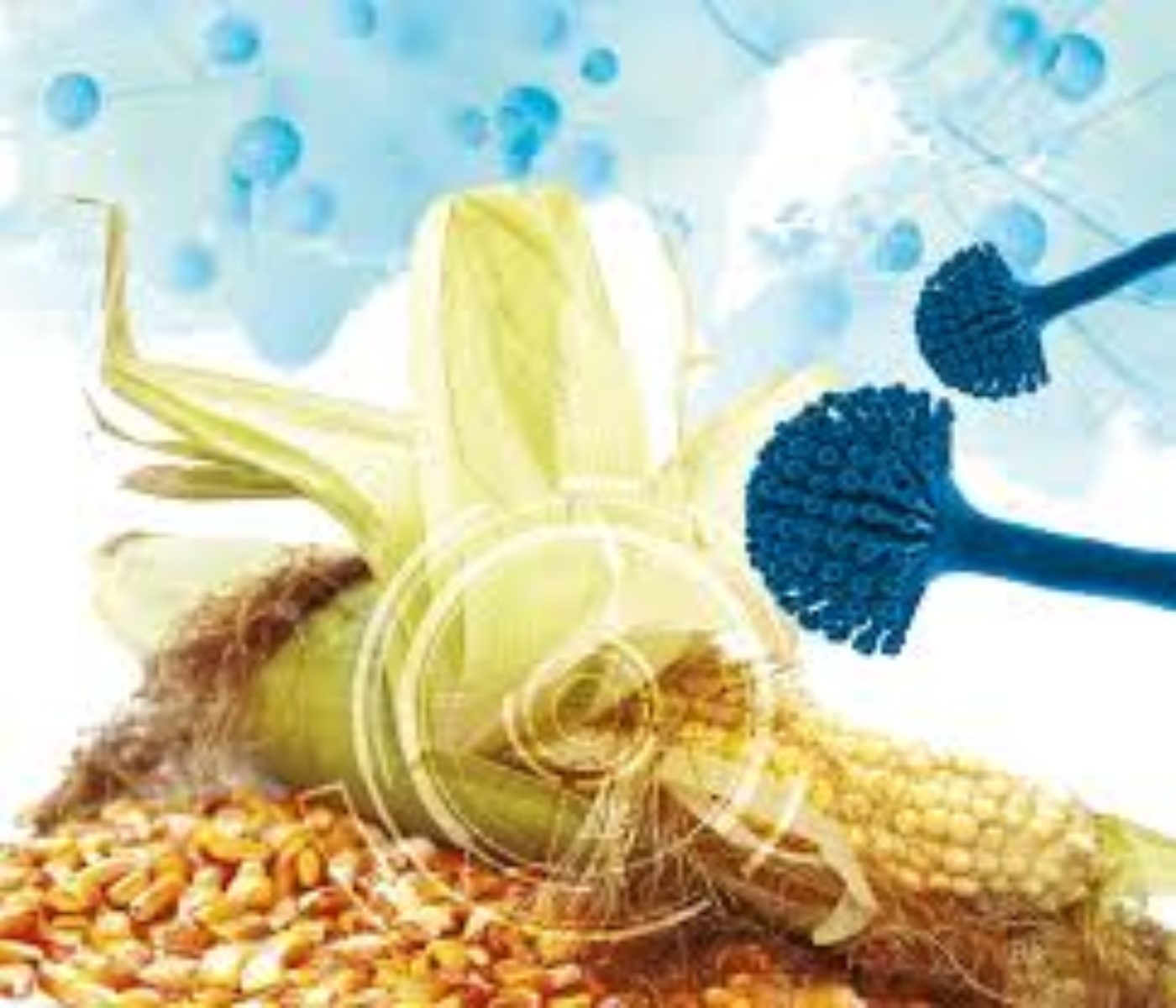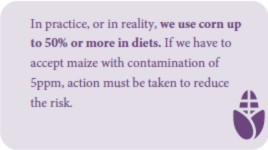Since mycotoxins are unevenly distributed or found in batches of ingredients, it’s crucial to apply good sampling methods throughout the year. Frequent sampling is critical for mycotoxin management and overall animal health.
 10 Apr 2024
10 Apr 2024
Management of Mycotoxins upon Detection in Raw Materials
Mycotoxins are naturally produced substances by fungi that contaminate raw materials (cereals and byproducts) used in food production and manufacturing. The fungi responsible for producing these mycotoxins are:
Type A Trichothecenes (or T2) and HT2 can originate in cool climates with humidity above 70%, and contamination occurs during pre-harvest.
Type B Trichothecenes, including:
Contamination occurs during pre-harvest.
This stage makes the plant more susceptible to Fusarium infection. Contamination occurs during pre-harvest.

Since mycotoxins are unevenly distributed or found in batches of ingredients, it’s crucial to apply good sampling methods throughout the year. Frequent sampling is critical for mycotoxin management and overall animal health.
Establishing Ingredient Rejection Levels
It’s essential to define rejection levels for ingredients entering food plants such as maize. FDA recommended risk levels for DON are 5ppm for grains and byproducts, with a suggestion not to use more than 20% of these ingredients in the diet.

If highly contaminated corn is accepted, it’s recommended to feed it to adult animals like growing and finishing pigs.
Recently weaned pigs are more susceptible to the negative effects of mycotoxins. Diluting feed rations with alternative ingredients can reduce mycotoxin concentrations. For example, bakery meal, an energy-rich byproduct, can be included up to 500 pounds per ton to reduce a portion of highly contaminated maize.
To safeguard pig health and performance, detoxifying and binding agents can be used. Several products on the market target specific mycotoxins or have a broad spectrum. For example:
The strategy to follow may include additionally supplementing thiamine in the diets of sows and newly weaned piglets, as these are the two production phases where this vitamin is typically supplemented.
Knowing the type of mycotoxin and the contamination level in ingredients is important for decision-making. Strict protocols for rejecting incoming ingredients to the feed mill save time and money while reducing the negative risk on animal performance due to mycotoxins.
After implementing a mycotoxin management program, it’s essential to observe clinical signs and animal performance to determine if other approaches are necessary.
Research on mycotoxin toxicity, tolerance levels, and binder technology has been extensively studied and is up to date, making it crucial to stay updated with the newest technology for mycotoxin analysis.
You may also like to read: “Mycotoxin levels in soybean meals”
Subscribe now to the technical magazine of animal nutrition
AUTHORS

Nutritional Interventions to Improve Fertility in Male Broiler Breeders
Edgar Oviedo
The Use of Organic Acids in Poultry: A Natural Path to Health and Productivity
M. Naeem
Synergistic Benefits of Prebiotics and Probiotics in Poultry, Swine, and Cattle
Gustavo Adolfo Quintana-Ospina
Hybrid Rye Potential in Laying Hen Feed Rations
Gwendolyn Jones
A day in the life of phosphorus in pigs: Part I
Rafael Duran Giménez-Rico
Use of enzymes in diets for ruminants
Braulio de la Calle Campos
Minerals and Hoof Health in the Pregnant Sow
Juan Gabriel Espino
Impact of Oxidized Fats on Swine Reproduction and Offspring
Maria Alejandra Perez Alvarado